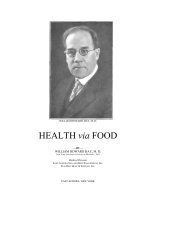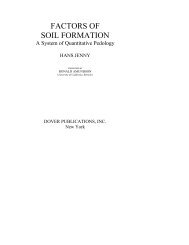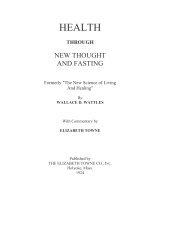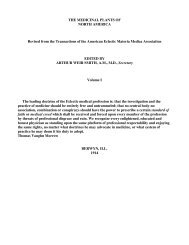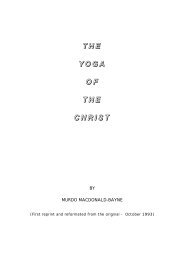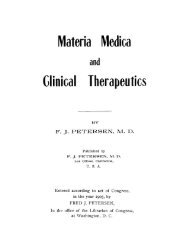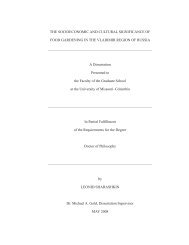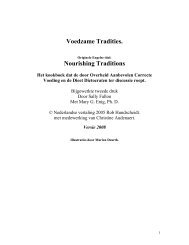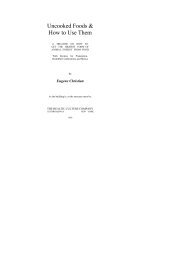Lloyd - Elixir & Flavoring Extracts Formulae - Soil and Health Library
Lloyd - Elixir & Flavoring Extracts Formulae - Soil and Health Library
Lloyd - Elixir & Flavoring Extracts Formulae - Soil and Health Library
Create successful ePaper yourself
Turn your PDF publications into a flip-book with our unique Google optimized e-Paper software.
, "the making of the kimiya," <strong>and</strong><br />
, " the making of the iksÎr,,"both meaning<br />
the same thing.<br />
In later, technical language, "<strong>Elixir</strong>" was used to denote<br />
various preparations more or less alchemistic. It was, for instance,<br />
synonymous with " Liquid Tincture," the first step in the preparation<br />
of the philosopher’s stone; <strong>and</strong> there was a white <strong>and</strong> a red elixir<br />
distinguished. Or, it designated any compound preparation of<br />
supposed " sublime " properties, reputed to prolong life <strong>and</strong> to ward off<br />
disease. Sincerely yours, CHARLES RICE.<br />
By referring to the letter of Dr. Rice it will be seen that at an<br />
early period the term elixir designated "the magical transformation<br />
powder so much sought after, a pinch of which would convert a whole<br />
mass of base metal into gold." Afterward the word was used " to<br />
denote various preparations more or less alchemistic," <strong>and</strong> it is to be<br />
presumed that curious or potent liquids were gradually introduced <strong>and</strong><br />
included among powders. Finally, the word elixir was applied only to<br />
liquids, but these, like the original magical powder, were supposed to<br />
possess the power of transmuting base metals into noble metals.<br />
Dr. Rice states that particular emphasis was once placed on a<br />
white <strong>and</strong> a red elixir. From a curious little work in our possession,<br />
bearing date 1682, we present, for the reader’s inspection, a facsimile of<br />
the processes recommended for making these preparations; <strong>and</strong> that<br />
the quaint formulæ may be rendered more intelligible, we give a<br />
facsimile of a table which explains the characters employed in the book,<br />
as follows:<br />
An Explication of Characters used in this Book."<br />
1This name was applied to Tin when the book was written<br />
2This name was applied to Copper when the book was written.



